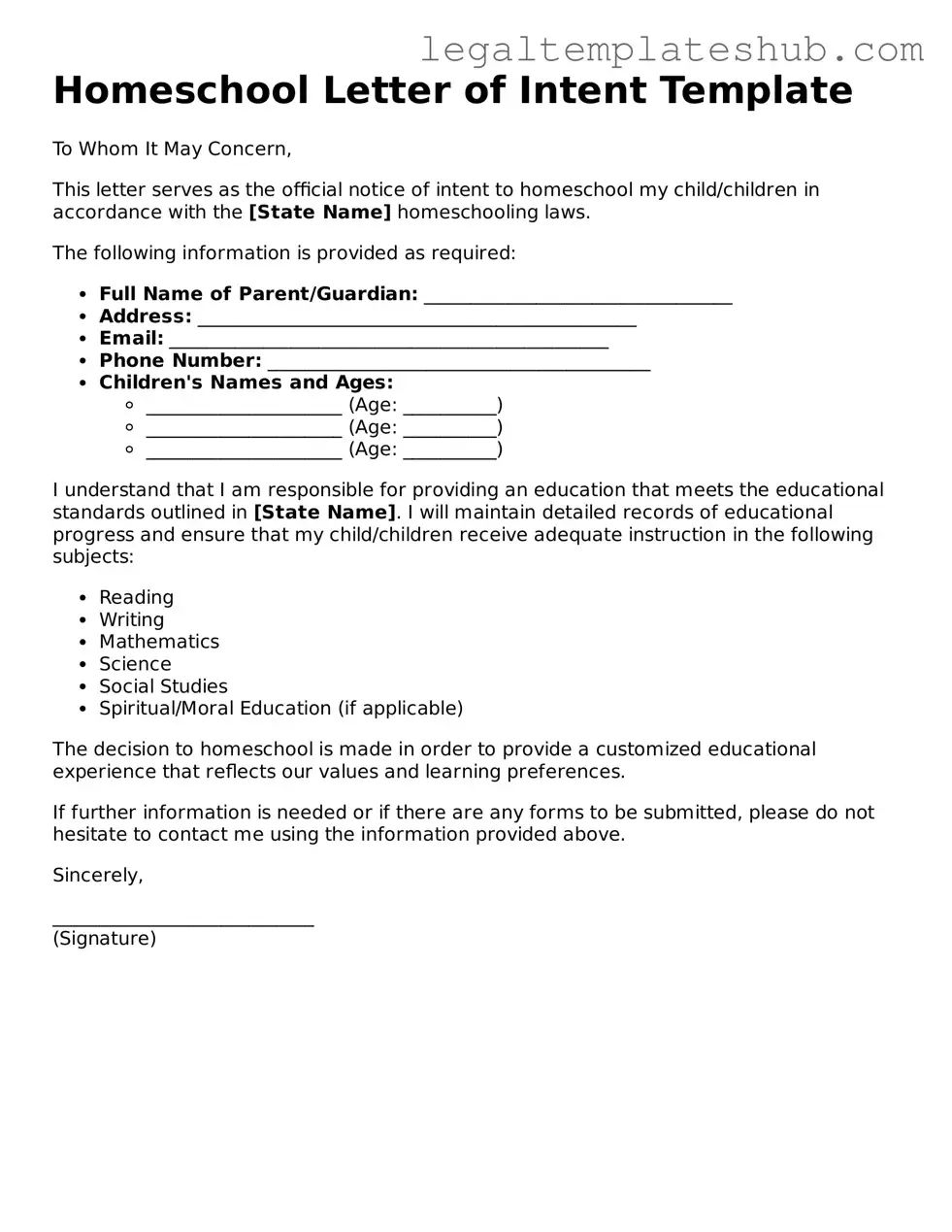Printable Homeschool Letter of Intent Template
The Homeschool Letter of Intent form is a crucial document that parents or guardians submit to inform their local school district of their decision to homeschool their children. This form serves as an official notification, ensuring compliance with state regulations and outlining the family's educational plans. Understanding how to properly fill out this form is essential for a smooth homeschooling experience; get started by clicking the button below.
Access Editor
